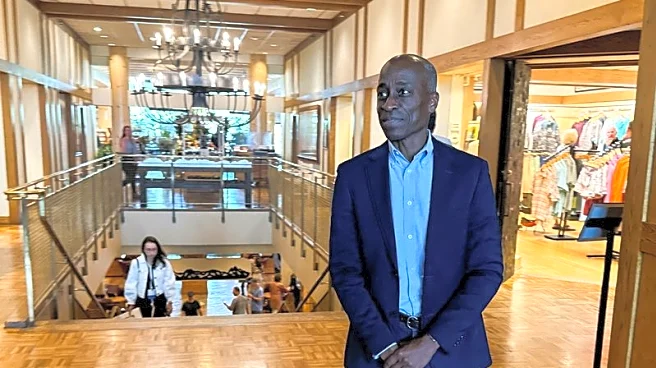What's Happening?
Federal Reserve Vice Chair Philip Jefferson has emphasized the need for a cautious approach to further interest rate cuts, citing the evolving balance of risks in the economy. Jefferson's remarks highlight the central bank's current policy stance, which
remains somewhat restrictive but closer to a neutral level. The division among Fed officials regarding the necessity of rate cuts reflects differing opinions on inflation risks and labor market conditions.
Why It's Important?
Jefferson's call for caution underscores the complexities of monetary policy decision-making amid uncertain economic conditions. The debate over rate cuts is crucial as it influences the Fed's ability to manage inflation and support the labor market. The outcome of this debate could have significant implications for economic growth, consumer spending, and business investment. Jefferson's perspective highlights the importance of careful analysis and consideration of long-term impacts when making policy decisions.
What's Next?
The Federal Reserve is expected to continue deliberating on the need for rate cuts, with upcoming economic data likely to influence its decisions. The lack of consensus among Fed officials may lead to varied policy approaches, impacting market expectations and economic stability. As the Fed navigates these challenges, its decisions will be closely watched by investors and policymakers.
Beyond the Headlines
The ongoing debate within the Fed underscores the importance of diverse perspectives in shaping monetary policy. Jefferson's cautionary approach may encourage a more measured response to economic conditions, potentially preventing hasty decisions that could destabilize the economy. The situation highlights the need for careful analysis and consideration of long-term impacts when making policy decisions.














